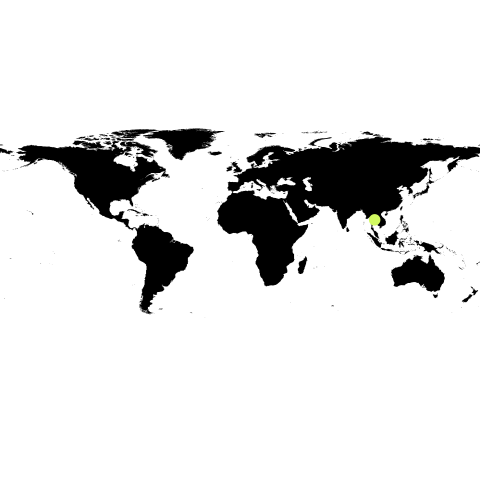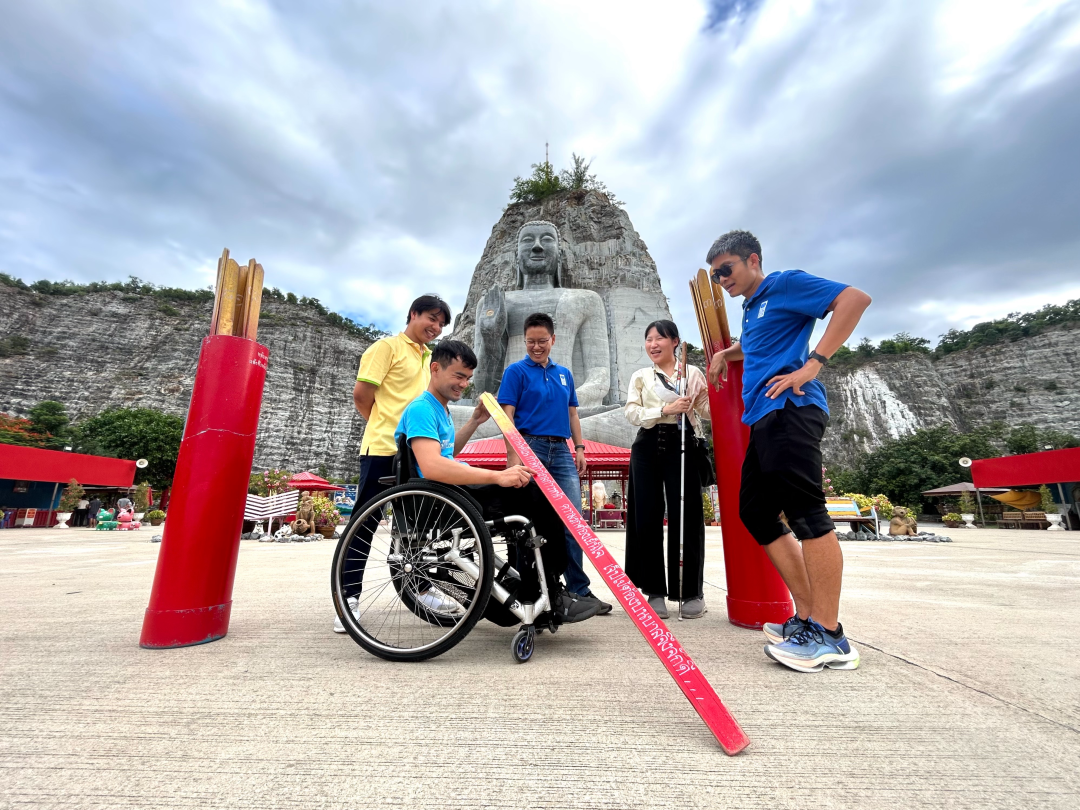Disclaimer:
Please be aware that the content herein has not been peer reviewed. It consists of personal reflections, insights, and learnings of the contributor(s). It may not be exhaustive, nor does it aim to be authoritative knowledge.
Learnings on your challenge
What are the top key insights you generated about your learning challenge during this Action Learning Plan? (Please list a maximum of 5 key insights)
I was initially excited about developing inclusive tourism solutions, but I soon found myself more fascinated by the process of co-creation. I come to realize that ‘empathy’ will take you far, but ‘co-creation’ will take you much further. It is a good start to try to empathize and understand the people whom you design solutions for. However, it is nearly impossible to fully understand those who are different from you. So, why not invite them to work together? Let them share insights on the pain points, co-design, and co-create solutions together. The results prove that engaging diverse perspectives leads to much better solutions. Three notable moments came to mind when reflecting on when the power of co-creation took me by surprise.
1. Inclusive pathway for all: The team began with infrastructure improvement. An existing access ramp at Amulet Printing House of Sukhothai neither complies with the national standard nor blends in with the beautiful traditional architecture. Seeking to change that, the first design idea was simply to extend ramp’s length and decrease the steepness by having it run from the front down to the right side of the house. However, our PWDs colleague pointed out that with this initial design, wheelchair users would have to go to the back to access the ramp while other people can enter from the front – making it rather divisive. The alternative user-led design is to re-construct the entire front entrance area as an ‘inclusive pathway’ that everyone, regardless of their different abilities, can use together. Co-creation process taught me that an inclusive mindset is not about adding separate facilities for PWDs, but it is about transforming the space to be one that everyone can use together.
2. User-centric solution to accessibility information issue: Accessibility begins even before travelers leave their homes. Finding accessibility information on tourism routes is a real challenge. Due to limited public understanding, locations that are marked ‘accessible’ sometimes are not actually accessible. PWDs travelers shared that they have to search user’s review photos or Google Maps’ Street View to see actual conditions as ‘evidence’ before making their decision. Both the problem and solution are already suggested by the user’s story. This sparked the idea of training the local community to add evidence of accessibility such as photos and videos to an existing and widely adopted platform like Google Maps, instead of developing a new and narrowly known platform. I was excited to work on a solution that builds on how the users seek to solve their own problems i.e. grassroots innovation. However, there is still room for further development e.g. structuring Google Maps photo display to consolidate all accessibility photos in a single place for easy review.
3. Local creativity to enabling drawing for the blind: Our co-creation involved not only PWDs travelers but also the local communities that wish to welcome PWDs to their community-based tourism (CBT). This last solution by a local activity facilitator in Sukhothai CBT surprised me the most. When the team first tested out CBT activities and discussed adjustments for inclusivity, I observed how our blind colleague struggled with the Sangkhalok Fish drawing activity (traditional drawing of Sukhothai). The activity required us to look at the template and copy the patterns, so I almost crossed this activity off the list of our CBT for all initiative. However, the local facilitator did not give up and explored different techniques to make the drawing possible for the blind. She finally came up with a solution to help people with visual impairment to draw Sangkhalok-style fish with full details by combining acrylic stencil to guide the drawing of the fish outline and clay jigsaws that guide the drawing of different sections inside the fish outline. I was very excited and inspired to see the change in the local community. Once they have a better understanding of disability inclusion, they are able to co-create solutions beyond our imagination.
These prototypes and pilots are merely a starting point. The team started at the community level to show that even with limited resources in local communities, inclusive tourism development is possible. Co-creation allows people of differences to better understand each other and work together. Small changes in understanding can create a lot of changes and impact many lives. Yet, we need these improvements and the change of mindsets upscaled. Local communities alone cannot transform the whole tourism ecosystem. We need to upscale our efforts to make the whole city an inclusive tourism destination with inclusive transportation, accessible accommodation, inclusive tour operators, etc. We also need to translate our experiences and lessons learnt on the ground into policies that create a conducive environment for inclusive tourism development nationwide.
Considering the outcomes of this learning challenge, which of the following best describe the handover process? (Please select all that apply)
Other
Can you provide more detail on your handover process?
We have yet to discuss with our governmental partner on scaling plan that will be implemented next year. In addition, the co-creation approach has proven effective to our partners, both the government and private sector (social enterprise) involved in the process this year.
Please paste any link(s) to blog(s) or publication(s) that articulate the learnings on your frontier challenge.
Data and Methods
Relating to your types of data, why did you chose these? What gaps in available data were these addressing?
PWDs representatives provided insights on the pain points, co-designed and co-created the solutions, as well as provided continuous feedback on the prototype development. With the collective approach, we also invite participation of local community and tour operator to share their views to ensure our solutions also cater to their needs.
In addition to physical infrastructure and communication, we found data gap in accessibility information which is crucial in the decision-making process of PWDs travelers. We prototyped community-generated data to supply reliable information on accessibility facilities of CBT destinations, making them available on Google Map.
At the end of the process, test trips were organized to obtain user review and feedback. The results are very positive.
Why was it necessary to apply the above innovation method on your frontier challenge? How did these help you to unpack the system?
Human-centered design and co-creation are the main method. We engaged PWDs in every step of the process, as the co-creators of the solutions that truly address their needs. However, since PWDs are not the only stakeholders, we also use participatory design approach, engaging local community and tour operator to ensure that the solutions address the needs of all parties - the users as well as the service providers.
Together, we developed prototypes of solutions (accessibility information, physical infrastructure, and communication tools) in two pilot communities: Sukhothai and Suphan Buri provinces.
Partners
Please indicate what partners you have actually worked with for this learning challenge.
Please state the name of the partner:
Designated Areas for Sustainable Tourism Administration
What sector does your partner belong to?
Government (&related)
Please provide a brief description of the partnership.
Implementing partner
Is this a new and unusual partner for UNDP?
No
Please indicate what partners you have actually worked with for this learning challenge.
Please state the name of the partner:
Nutty's Adventures
What sector does your partner belong to?
Private Sector
Please provide a brief description of the partnership.
Implementing partner. One of Thailand's leading social enterprises with extensive experience offering tourism services to PWDs travelers, including those from abroad
Is this a new and unusual partner for UNDP?
Yes
Please indicate what partners you have actually worked with for this learning challenge.
Please state the name of the partner:
Local communities in Sukhothai and Suphan Buri provinces
End
Bonus question: How did the interplay of innovation methods, new forms of data and unusual partners enable you to learn & generate insights, that otherwise you would have not been able to achieve?
We would not be able to design solutions that truly address the needs of all stakeholders if not for the co-creation approach. In Thailand, there are numerous cases where "the makers are not the users while the users never have the opportunity to co-create solutions for their own issues". Many infrastructures are built without an understanding of the standards and user's needs, so they cannot be used and become a waste of investment. Furthermore, the co-creation process shows that some solutions can be developed without or with very low investment; sometimes, it only takes a change of attitude and understanding e.g. communication with the blind. Some prototypes even have the potential to become marketable products beyond the tourism sector.
Please upload any further supporting evidence / documents / data you have produced on your frontier challenge that showcase your learnings.
Blog: https://www.undp.org/thailand/blog/cocreation-journey-tourism Video: https://www.youtube.com/watch?v=fkbeo39czQI&t=6s Publication: https://www.undp.org/thailand/publications/community-based-tourism-all-co-creation-journey
The closing form saves automatically or via the blue "save changes" button the top left. Thank you



 9Industry, innovation and infrastructure
9Industry, innovation and infrastructure 10Reduced innequalities
10Reduced innequalities 11Sustainable cities and communities
11Sustainable cities and communities
Comments
Log in to add a comment or reply.